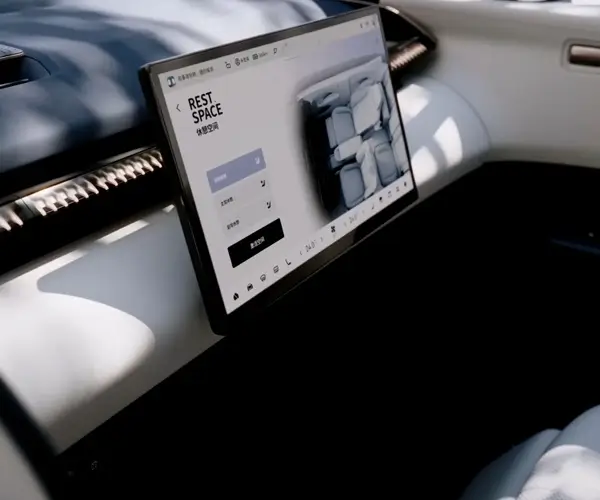Unlocking Precision and Power: The Ultimate Guide to Gear Motor Use in Modern Machinery
In an era fueled by rapid technological advancement and increasing automation, the role of specialized motor systems in machinery has never been more pivotal. Among these, gear motors stand out as a cornerstone component, seamlessly blending electrical and mechanical power to achieve unmatched control over motion, torque, and speed. Whether it's moving components in a factory, powering robots, or even driving household appliances, gear motors are everywhere — quietly ensuring efficiency and precision behind the scenes.

What exactly is a gear motor? At its core, a gear motor combines an electric motor with a gear train, enabling the motor’s high-speed rotation to be slowed down with increased torque. Think of it as a finely tuned partnership: the electric motor provides rapid motion, and the gear system modulates this into suitable, usable motion for specific applications. This synergy allows machinery to operate with greater stability and accuracy, a necessity for modern automation.
The anatomy and functioning of gear motors A typical gear motor contains two main components: the motor itself—often a DC, AC, or brushless motor—and a gear reducer, typically a planetary, spur, or worm gear system. The motor generates rotational energy, which is transferred through the gear assembly. The gear reducer modifies the output speed to a desired level while amplifying torque, making the system adaptable to a multitude of operational needs.
This design offers several advantages. Firstly, it provides precise control over speed and torque — critical for applications requiring delicate movements or heavy loads. Secondly, gear motors are highly efficient, converting electrical energy into mechanical energy with minimal losses. Thirdly, their compact size ensures they can be integrated into small spaces without sacrificing power.
Diverse applications across industries The ubiquity of gear motors is no accident. Their versatility allows them to span a broad spectrum of industry sectors:
Manufacturing and Industrial Automation: In conveyor systems, robotic arms, and packaging machines, gear motors deliver steady, controlled movement. Their ability to handle high pressures and loads makes them essential for tasks like metal forming or assembly line automation.
Home Appliances: Even your coffee grinder or washing machine relies on small, precise gear motors to operate smoothly and quietly, illustrating their importance in everyday life.
Automotive Industry: Automatic transmissions, power steering, and electric seat adjusters employ gear motors to enhance vehicle functionality and driver comfort.
Robotics and Aerospace: High-precision gear motors power robotic joints and aerospace instrumentation, where accuracy and reliability are vital.
Renewable Energy: In wind turbines and solar tracking systems, specialized gear drives help optimize energy capture by adjusting positions slowly and steadily.
The underlying factor that makes gear motors so appealing across these domains is their adaptability. Engineers can tailor gear ratios and motor specifications to suit specific needs — whether it's delivering a high-torque start or a slow, controlled movement.
Advantages of gear motors over other power transmission options The decision to use a gear motor is often rooted in the benefits it offers:
Enhanced Torque at Low Speeds: Standard electric motors might struggle at low RPM, but gear motors excel at providing sustained torque across a broad range.
Precision and Repeatability: Gear reduction ensures movements are consistent and repeatable, vital in manufacturing and quality control.
Space-saving and Compact Design: Integrating a gear train with the motor reduces the need for external gearing assemblies, saving space and simplifying design.
Energy Efficiency: With carefully chosen gear ratios and high-quality components, gear motors deliver energy savings over time.
Customization and Flexibility: Manufacturers can customize gear ratios, motor types, and mounting options to fit unique applications more readily than other power transmission devices.
Key considerations in gear motor selection Choosing the right gear motor involves evaluating several factors to ensure optimal performance:
Load Requirements: Assess the maximum load, starting torque, and continuous torque demands.
Speed Range: Determine the desired operating speed and whether variable speeds are needed.
Duty Cycle: Understand whether the motor will operate continuously or intermittently, as this impacts size and cooling requirements.
Environmental Conditions: Account for operating environment aspects — dust, moisture, temperature, vibration — and select appropriately sealed or rugged models.
Power Supply Compatibility: Ensure the motor is compatible with available power sources, be it AC or DC.
Maintenance and Lifespan: Consider long-term reliability, lubrication needs, and ease of maintenance.
The evolution of gear motors Over the years, gear motor technology has experienced significant advancements. Modern designs incorporate high-grade materials, refined manufacturing processes, and precise electronic controls, which have all contributed to safer, quieter, and more efficient motors.
For example, brushless DC gear motors leverage electronic commutation for improved durability and less maintenance. Additionally, integration with sensors and controllers has allowed for smarter, more adaptable systems—forming the backbone of Industry 4.0 innovations.
Looking ahead: the future of gear motor use As industries push towards greater automation, robotics, and sustainable solutions, gear motors will continue to evolve. We see potential in:
Miniaturization: Smaller, more powerful gear motors suitable for wearables and miniature robotics.
Enhanced Efficiency: Innovations aimed at reducing energy consumption for greener operations.
Intelligent Control: Integration with AI for predictive maintenance, adaptive control, and real-time feedback.
Customization & Modular Design: Modular gear motors that can be easily configured for diverse applications, reducing design complexity and cost.
Kpower has delivered professional drive system solutions to over 500 enterprise clients globally with products covering various fields such as Smart Home Systems, Automatic Electronics, Robotics, Precision Agriculture, Drones, and Industrial Automation.




































